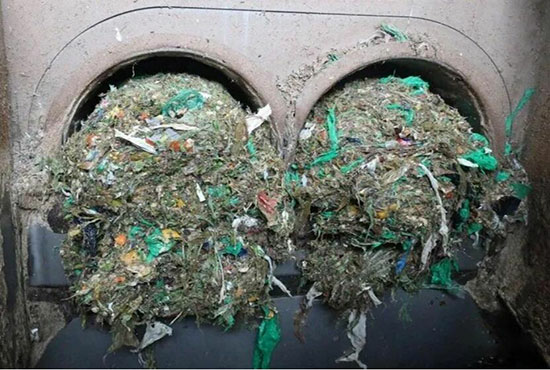Researchers from Sweden, Norway, and Germany published a new study in the journal Science on July 2 that the current global plastic emission rate may trigger an irreversible impact. According to the author, plastic pollution is a global threat, and it is a "reasonable policy response" to take actions to significantly reduce the emissions of plastics to the environment.

Plastic can be seen everywhere on the earth: from deserts and mountain tops to deep oceans and Arctic snow. As of 2016, the global annual discharge of plastic into the world’s lakes, rivers and oceans is estimated to be between 9 million and 23 million metric tons, and the annual discharge to land is also similar. If business as usual is expected, these numbers are estimated to almost double by 2025.
Matthew MacLeod, a professor at Stockholm University and the lead author of the study, said: "Plastic is deeply ingrained in our society. It leaks into the environment everywhere, even in countries with good waste disposal infrastructure. Although scientists and the public’s awareness of plastic pollution has greatly increased in recent years, emissions are still on the rise."
Mine Tekman, a doctoral student at the Alfred Wegener Institute in Germany and co-author of the study, is not surprised by this difference, because plastic pollution is not only an environmental issue, but also a "political and economic" issue. She believes that the current solutions, such as recycling and cleaning technologies, are not enough, and we must solve this problem fundamentally.

"The world is promoting recycling technology solutions and removing plastic from the environment. As consumers, we believe that when we sort plastic waste correctly, all plastic waste will magically be recycled.
Technically, there are many restrictions on the recycling of plastics. Countries with good infrastructure have been exporting plastic waste to countries with poor facilities.
Teichman said: "The method is to reduce emissions requires severe actions, such as setting a cap on the production of virgin plastics to increase the value of recycled plastics, and prohibiting the export of plastic waste, unless it is exported to countries with better recycling conditions.
When the amount of emissions exceeds the amount removed by clean-up measures and natural environmental processes, plastics will accumulate in the environment, which is caused by a multi-step process called weathering.
"The weathering of plastics occurs due to many different processes, and we have made great progress in understanding these processes. But weathering is constantly changing the characteristics of plastic pollution, which opens new doors to more problems.
"Hans Peter Arp, a researcher at the Norwegian Institute of Geotechnical Engineering (NGI) and a professor at the Norwegian University of Science and Technology (NTNU), said he is also a co-author of the study.
Arp said: "Degradation is very slow and cannot effectively prevent accumulation, so exposure to weathered plastic will only increase." Therefore, plastic is a "poorly reversible pollutant" because of its continuous emissions and environmental persistence.

As co-author Annika Jahnke, a researcher at the Helmholtz Center for Environmental Studies (UFZ) and a professor at RWTH Aachen University explained, remote environments are particularly threatened.
"In remote environments, plastic fragments cannot be removed by manual cleaning, and the weathering of large plastic objects will inevitably produce a large number of micro and nano plastic particles. There are also chemicals that are intentionally added to plastics and other aggregates from plastics. The related chemicals are leached out due to the fracture of the skeleton.
Therefore, plastic in the environment is a constantly moving target, and its complexity and fluidity continue to increase. Where it accumulates and what impact it may have are challenging and even impossible to predict."

